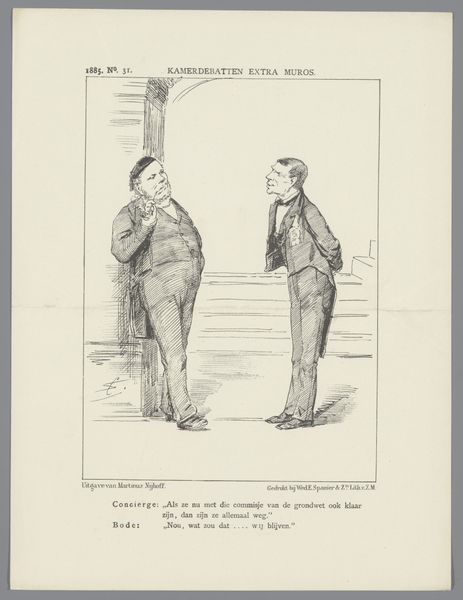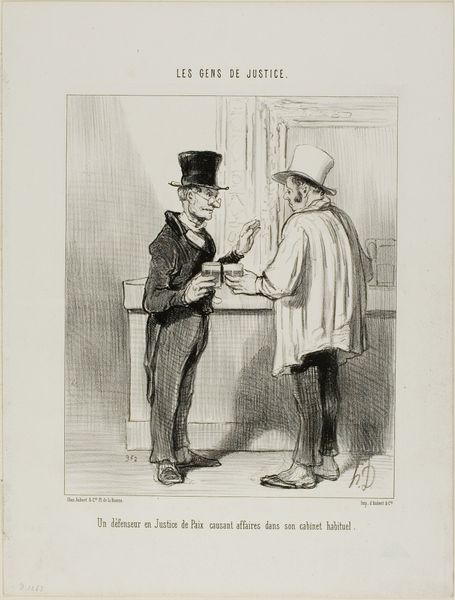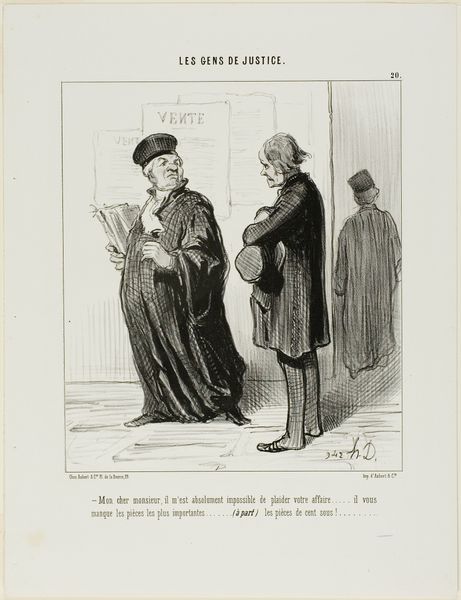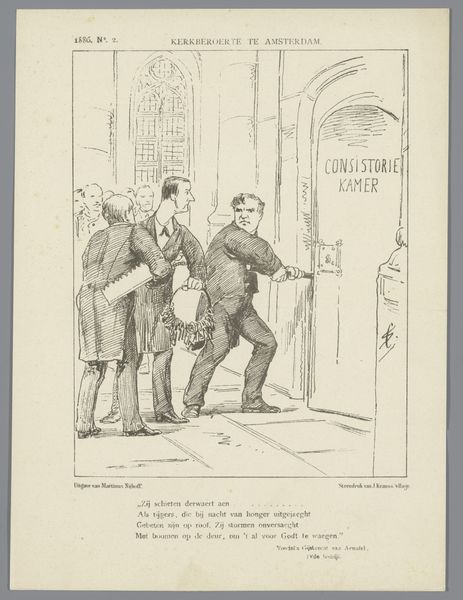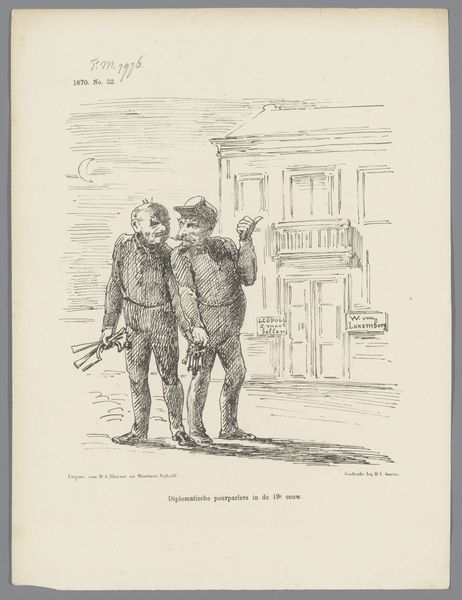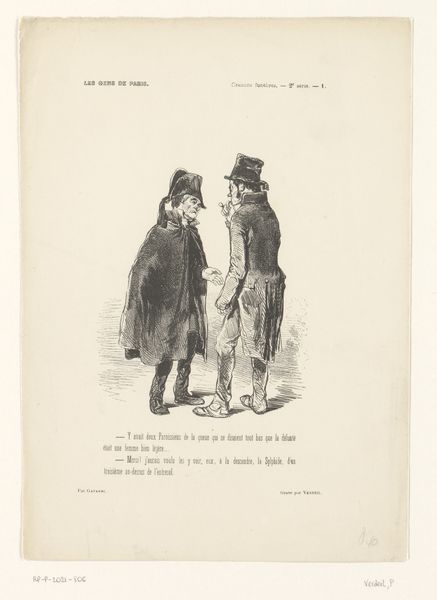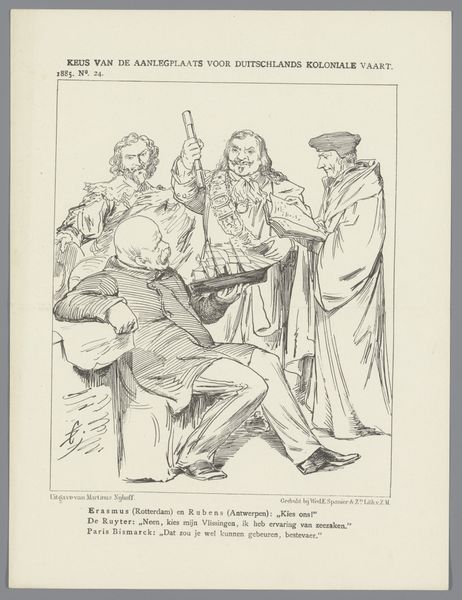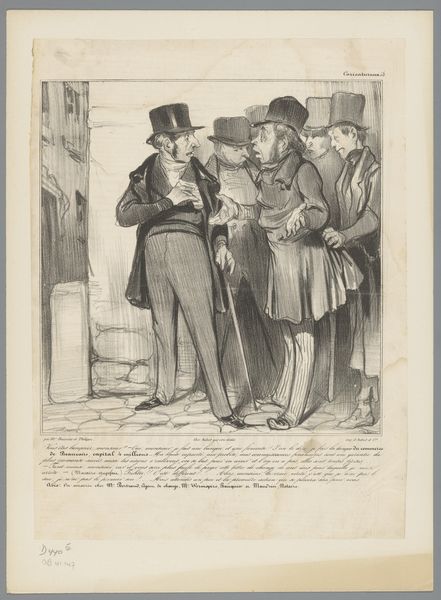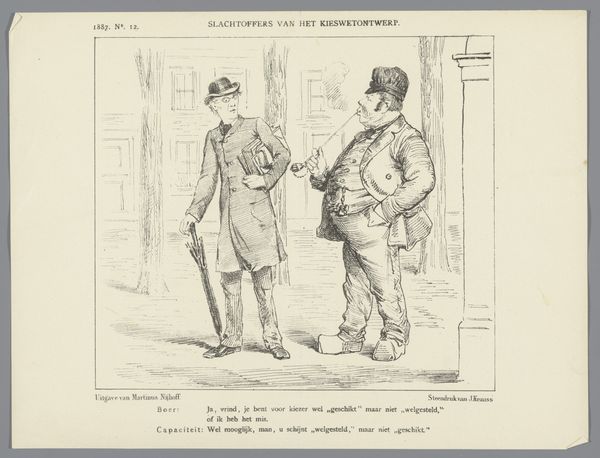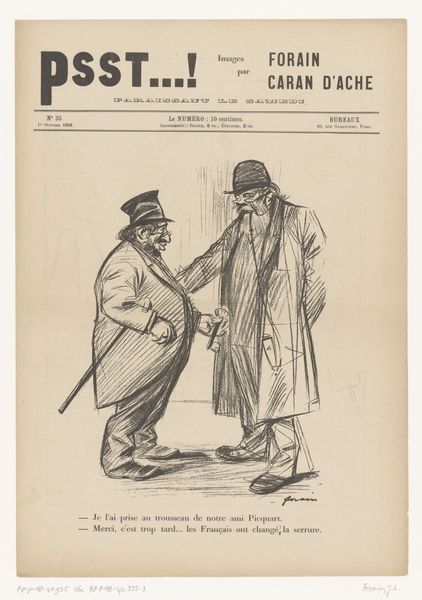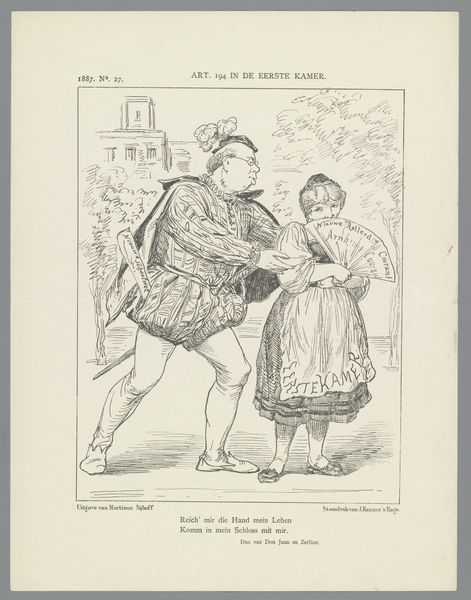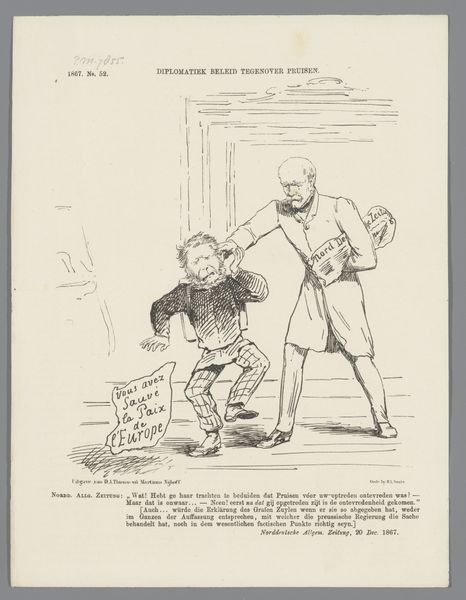
print, engraving
#
portrait
#
narrative-art
#
dutch-golden-age
# print
#
caricature
#
figuration
#
line
#
cityscape
#
engraving
Dimensions: height 275 mm, width 215 mm
Copyright: Rijks Museum: Open Domain
Curator: This is "Politieke spotprent over financiën, 1886," a political cartoon about finances from 1886 by Johan Michaël Schmidt Crans. The work is an engraving printed on paper. What strikes you most upon seeing this, Editor? Editor: Immediately, I'm struck by how dense the semiotics are here. It evokes anxieties around money and power through a relatively simple composition. Are those figures at the door symbolic of a frenzied, unknowable public? Curator: Indeed. Let’s begin with the most prominent visual elements. We see two men in the foreground, finely detailed in comparison to the obscured, shadowed figures behind them, all rigidly constructed through careful lines and hatching. Their formal wear immediately denotes their social class and status within the city’s financial scene. Editor: Yes, the clothing, especially those top hats, speak volumes about the social milieu. I am sure that for the contemporary audience this imagery was laden with associations concerning the financial elite, perhaps highlighting their detachment from everyday realities. It invites speculation as to the accessibility of these spaces for average people at the time. The “Effecten Hoek” sign above the door... almost mocking. Curator: Observe the careful articulation of their postures and clothing—consider how the artist uses these elements to communicate character. Look closely at the man on the left, he is holding papers perhaps representative of documents with the title, "EFFECTEN HOEK". The visual texture achieved through the engraving enhances the weight and materiality of each figure. Editor: And the figures emerging from the “Effecten Hoek” suggest not only financial activity but the anxieties that come with such dealings—a frenetic energy versus the comparative solidity of the central characters. Perhaps there are darker undertones about wealth distribution present. Curator: The beauty of Crans's work lies not just in the graphic rendering, but how all those linear structures converge to convey complex societal tensions. It captures the structural foundations and underlying powers within a particular historical context through such deft construction of light, shadow, and spatial relations. Editor: Absolutely. The symbolic depth, carefully encoded through clothing, environment and figure, tells a deeper story of social disparity during the late 19th Century in ways that speak directly to the historical narrative of capital and those shut outside. Curator: Looking closer, we understand the language with which those tensions take visual form within Crans’s commentary on the politics of finance. Editor: And I appreciate uncovering these anxieties which still, so presciently, reverberate in our own time through visual markers easily read by contemporary audiences too.
Comments
No comments
Be the first to comment and join the conversation on the ultimate creative platform.

